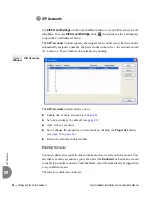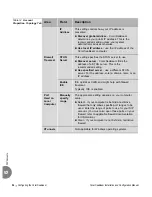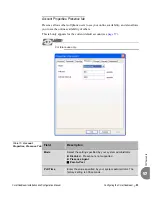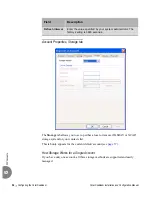
Coral SeaBeam Installation and Configuration Manual
Configuring the Coral SeaBeam
59
SIP Accoun
ts
6
You can set up Coral SeaBeam for the type of security (encryption) you want for
incoming and outgoing calls.
Coral SeaBeam supports:
Signaling encryption using TLS
Media encryption using SRTP
Setting up for Security outside of Coral SeaBeam
When using TLS, you must have the root certificate that signs the proxy's chain of
certificates. In most cases, the root certification will already be installed. Procedures
for the exchange of certificates are outside the scope of this document. The certificates
must be stored on the Coral SeaBeam computer, in the root certificate store.
Setting up the root certificate on your computer ensures that the connection to the
proxy is TLS secure (the first hop). Any proxy in the chain (between you and the
caller) that does not support TLS might cause an insecure link in the chain. Therefore,
if the other party is outside your domain, you cannot be completely sure that the call
is secured at the signaling level, which means that you cannot be sure that it is secured
at the media level.
When a call with both signaling and media encryption is established, Coral SeaBeam
displays the encryption icon ( ). This icon indicates that the call is secure between
each caller and their proxy (first and last hop) and that it might or might not be secure
for other hops.
When a call with no encryption or with only signaling encryption is established, Coral
SeaBeam displays the unencrypted icon ( ).
Setting up for Security within Coral SeaBeam
The options for media encryption are described in the following table:
Media
Encryption
See
Table 16 on page 57
.
The factory setting is
Make unencrypted calls,
accept all calls
.
Area
Field
Description





































